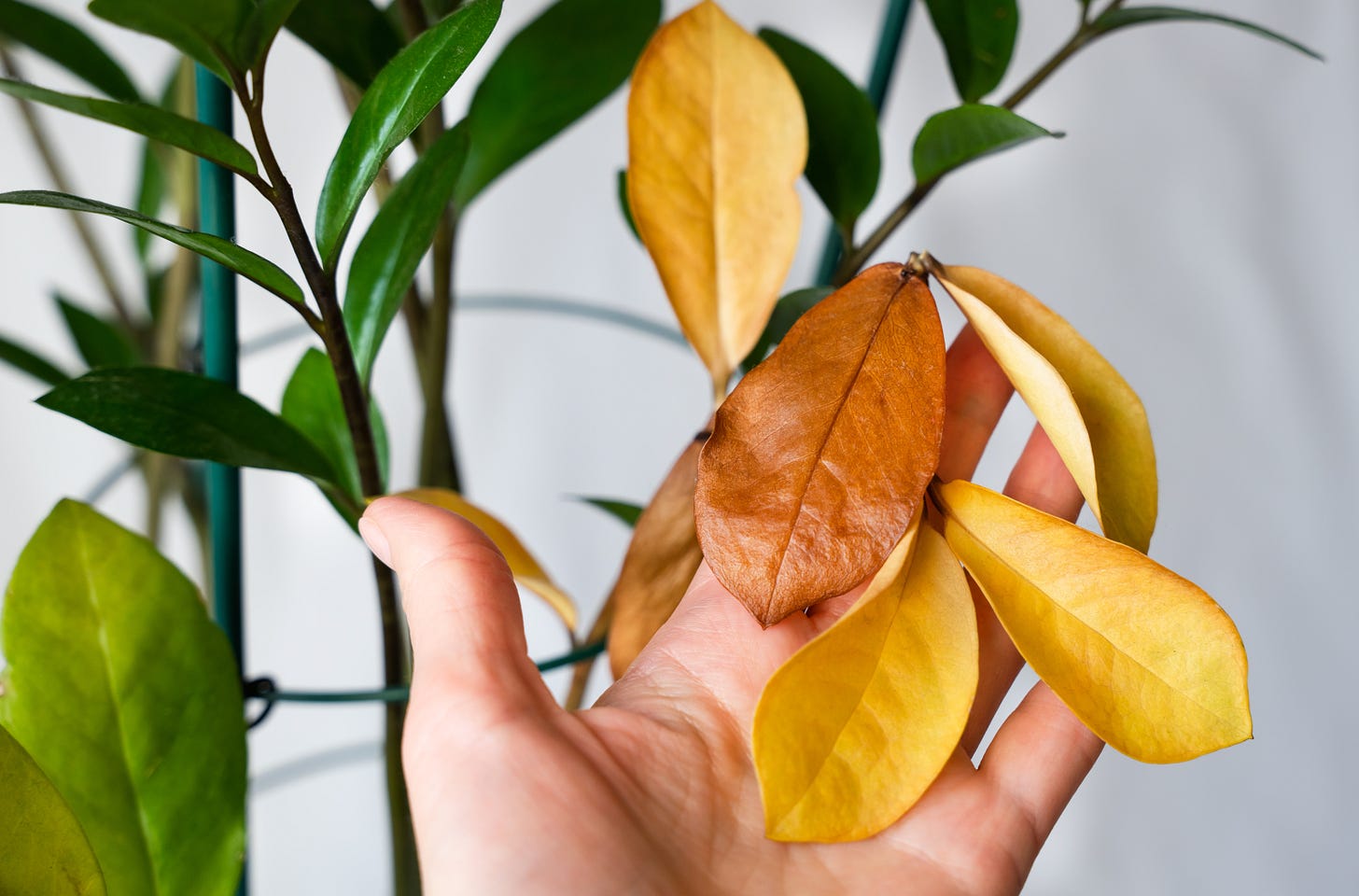Leaves are turning outside, the air is crisp, and our homes begin to feel like sanctuaries again as we draw inward. Just as we bring out cozy blankets and warm mugs, our plants are making their own seasonal shift.
When it comes to repotting, most people instinctively think of spring. It’s when nurseries are bursting with fresh plants, growth is at its peak, and the energy in the garden is buzzing with renewal. But here’s a little-known secret: fall can be an equally powerful — and sometimes even better — time to repot certain plants.
In fact, repotting in fall aligns beautifully with both plant care and my philosophy of tending not only to our green companions, but to ourselves.
The Myth of Spring-Only Repotting
The gardening world often frames spring as the “official” season for repotting. That makes sense — plants are actively growing, which means they’ll bounce back quickly after the stress of a move. But this has led to a misconception: that repotting outside of spring is harmful.
The truth is more nuanced. While spring is wonderful, fall offers its own unique set of benefits that too often get overlooked.
Why Fall Repotting Works
Think of fall as the season of gentle transitions. Growth naturally slows, but it doesn’t stop entirely — especially for houseplants and many perennials we keep indoors. This creates the perfect conditions for repotting:
Roots expand before winter dormancy. When a plant isn’t pouring all its energy into new leaves or flowers, it has more to devote to settling into a fresh pot.
Reduced shock. Because above-ground growth is slower, plants can handle the disruption of new soil more calmly.
Pest and soil refresh. Summer soil often accumulates fungus gnats, tired roots, or compacted dirt. Repotting in Fall clears the slate before winter.
Better indoor adjustment. For plants moving back indoors after summer on the patio, a repot provides fresh nutrients and helps them adapt to the lower light and drier air of indoor life.
It’s like giving your plant a wellness reset before the long, quiet months ahead.
Plants That Benefit Most
Not every plant should be repotted in fall, but many will thank you for it. Some good candidates include:
Indoor tropicals like pothos, peace lilies, and snake plants. These continue steady growth indoors, even in winter.
Herbs such as rosemary, basil, or tulsi that get stressed if roots stay cramped or soil turns stale.
Any plant clearly rootbound. If you see roots circling the pot, poking out of drainage holes, or if water runs right through without soaking in, it’s time.
When Not to Repot
Of course, there are exceptions. Some plants prefer to be left alone in Fall:
Dormant plants. Bulbs or deciduous bonsai that are shutting down completely for winter should wait until spring.
Flowering plants. If your plant is in full bloom, enjoy the flowers first. Repotting can cause blooms to fade early.
As always, listen to your plant. It will show you when it’s ready for a new container.
A Gentle Fall Repotting Ritual
Repotting doesn’t have to be a rushed task on your to-do list. It can become a ritual — a way to slow down, connect with your plant, and reflect on your own inner life.
Here’s how to make it meaningful:
Pick the right time. A sunny fall afternoon, when light pours gently through the window, sets the tone.
Choose the right pot. Only go up one size to avoid overwhelming the roots. Ensure drainage is solid.
Refresh the soil. Use high-quality, well-draining potting mix suited to your plant’s needs.
Trim and tidy. Remove circling roots and dead leaves. It’s like decluttering your plant’s home.
Replant with intention. As you press soil around the roots, think about what “too-small container” you’ve outgrown in your own life.
When you finish, water gently and place the plant somewhere calm to recover.
The Bigger Lesson: Repotting Ourselves
This is where plant care crosses into self-care — the heart of TriGardening.
A plant that has outgrown its pot won’t thrive until it’s given more room. The same is true for us. Sometimes we don’t notice the subtle signs that we’re cramped — stress, restlessness, or routines that no longer nourish us.
Repotting reminds us that growth requires space, fresh energy, and sometimes, letting go of the container we’ve long outgrown.
Fall, with its themes of reflection and preparation, is the perfect season to embrace this. Just as trees let go of their leaves, we can let go of what’s no longer serving us — making space for new growth when spring eventually returns.
Quick Checklist: Signs It’s Time to Repot
Roots circling the pot or pushing through drainage holes.
Soil dries out almost immediately after watering.
Leaves yellowing or dropping despite proper care.
Plant growth stalling.
If one or more of these signs show up, your plant is sending you a gentle message: it’s time for more space.
A Seasonal Reset
Repotting in fall isn’t just about plant health — it’s a chance to honor the rhythm of the season. Plants remind us that slowing down doesn’t mean stopping. It means redirecting energy, grounding ourselves, and preparing for what’s ahead.
So this fall, I invite you to give the gift of fresh soil and space to a plant that needs it. As you do, notice how the ritual feels in your own body. What are you preparing for this winter? What new space are you creating for yourself?
Final Thought
Fall is often overlooked in the gardening calendar, but in truth, it holds quiet power. Repotting now is not only practical, but symbolic. It’s about tending to roots, both theirs and ours.
Because at its heart, TriGardening isn’t just about growing plants. It’s about growing lives filled with peace, balance, and resilience.
So grab a pot, a bag of soil, and one plant ready for a reset — and see how a simple autumn ritual can ripple outward into the way you care for yourself.
Until next time,
-KC Carr
P.S. If you think someone would benefit from this post, please share it with the link below. :)




